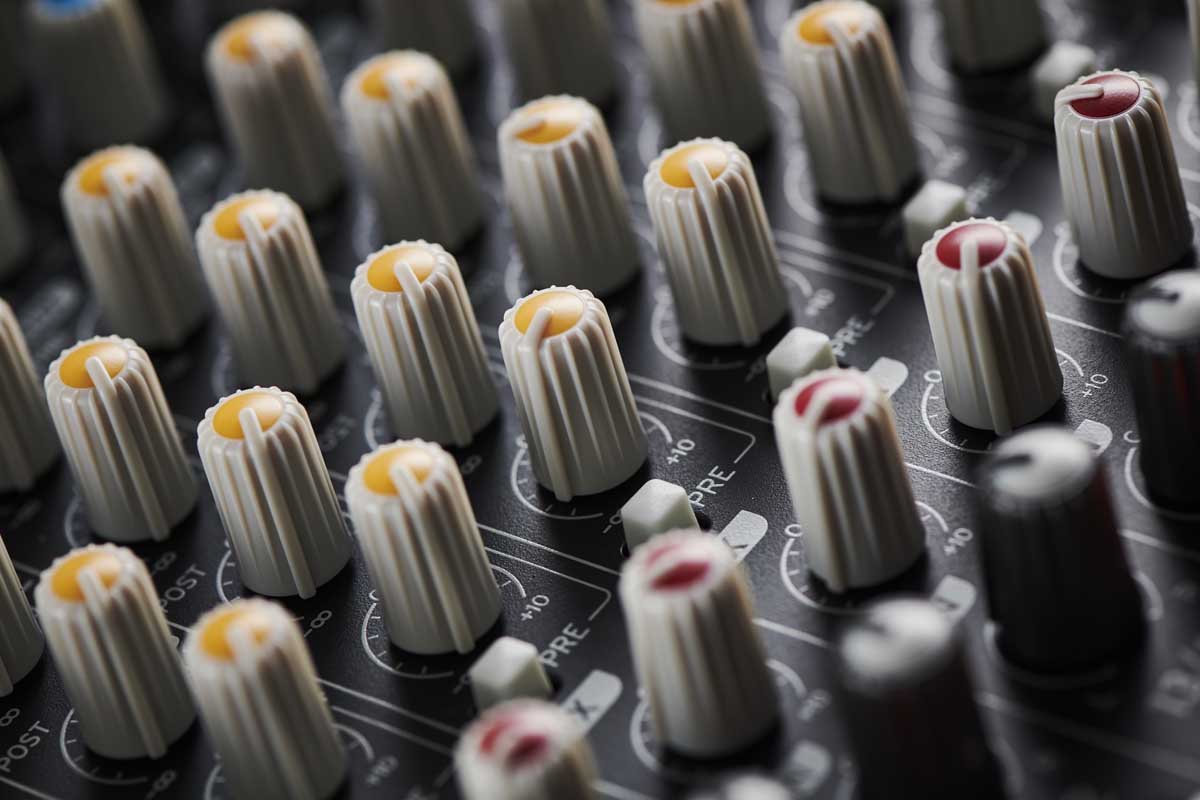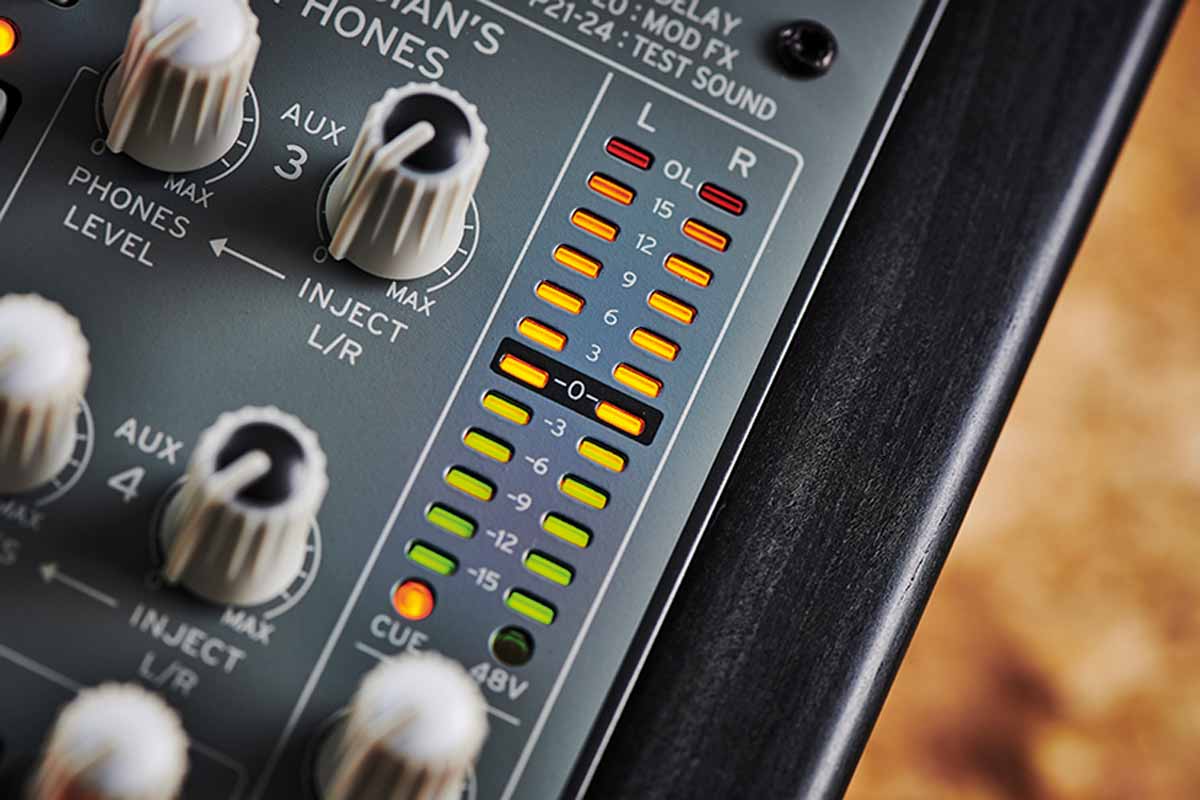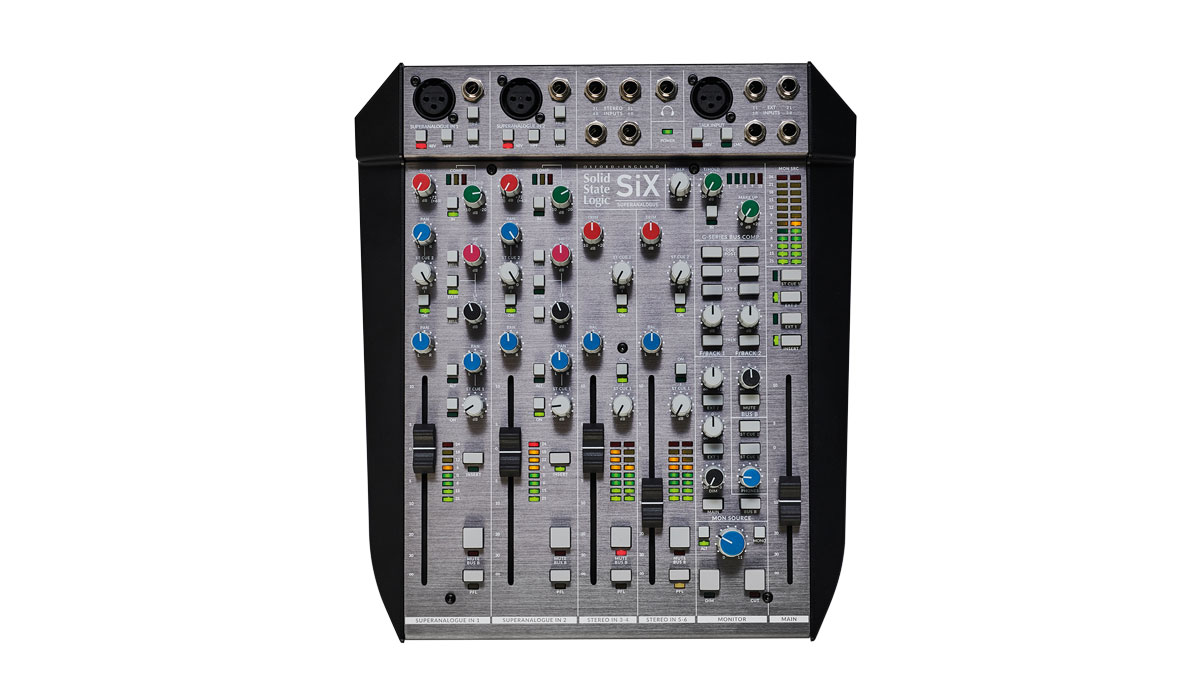MusicRadar Verdict
If you can live with the lack of digital I/O, this is an excellent mixer with lots of features musicians will love
Pros
- +
Analogue channel strips have excellent sound/functionality.
- +
Digital effects are flexible and sound great.
- +
Sub groups, mute groups and aux channels are flexible.
- +
They're well-designed, too.
Cons
- -
Digital I/O is basic, at best.
- -
No onboard recording.
MusicRadar's got your back
What is it?
Korg’s SoundLink mixers were unveiled at NAMM 2020 alongside the Wavestate, SV-2 and ARP 2600 and it says something about the clout of the names involved that they weren’t entirely overshadowed by such a hype-hogging lineup.
Any musician with an interest in mixing tech will know Greg Mackie’s name though, and the fact that he and equally-notable, former Trident designer Peter Watts have had input into Korg’s latest consoles was always guaranteed to turn heads.
Here, the 24 channels are divided evenly into eight mono and eight stereo all of which have XLR mic and 1/4-inch TRS line inputs on the rear
In an intro to the manual, Mackie describes the SoundLink designs as combining “analogue’s instant control… with the power of high-quality digital where it counts”. What that amounts to is a mixer design that combines fully analogue channel strips with digital DSP based on Korg’s existing effects technology.
There are two models in the range, the 24-input MW-2408, on review here, and the MW-1608, which has an identical feature set but reduces the total input count to 16.
Here, the 24 channels are divided evenly into eight mono and eight stereo all of which have XLR mic and 1/4-inch TRS line inputs on the rear. The ‘08’ in each model’s name is derived from the four stereo subgroups, complete with eight 1/4-inch outputs.

Performance and verdict
Each mixer channel is equipped with one of Peter Watts’ newly-designed HiVolt preamps, which Korg tout as “low noise, high headroom”, and they certainly deliver excellent quality, bearing in mind the mixer’s price point – which is equally true across both the mono and stereo channels.
Beyond this, each of the mono channels is equipped with a switchable high-pass filter, fixed at 100Hz, plus a one-knob compressor.
Want all the hottest music and gear news, reviews, deals, features and more, direct to your inbox? Sign up here.
Each of the mono channels is equipped with a switchable high-pass filter, fixed at 100Hz, plus a one-knob compressor. This latter feature is a nice touch, great for controlling dynamically inconsistent vocals
This latter feature is a nice touch, great for controlling dynamically inconsistent vocals and, in our tests, good at beefing-up unpredictable, modulated synth sounds. There’s a handy indicator light showing when the compressor is engaged too.
Each channel has an EQ section, but these differ slightly between the mono and stereo types. The mono channels each have fixed position high and low shelf EQs, along with a mid EQ sweepable between 250Hz and 5kHz. The stereo channels, meanwhile, keep the same high and low EQs but instead have two fixed position mid EQs.

Beyond these differences, and the lack of compressor and HPF, the remaining elements of the stereo channels are identical to their mono counterparts. All channels have four aux sends – by default two are pre-fader and two post-fader, but can be switched to be all pre-fader.
Then there’s an FX send dial, pan control and mute and pre-fader listen switches. Each channel is also equipped with a channel fader, bus assign switches for routing output and -20dB and overload indicator LEDs.
On the recording front, the mixers offer a Musician’s Phones feature that makes it exceptionally easy to set up musician-specific monitor/headphone mixes using the aux channels
While Korg are pitching these at a variety of users – the manual has setup suggestions for churches, conference centres, live bands and recording – they were clearly designed with musicians and musical engineers in mind.
On the recording front, the mixers offer a Musician’s Phones feature that makes it exceptionally easy to set up musician-specific monitor/headphone mixes using the aux channels. The inclusion of sub groups is a really nice touch at this price point too – handy for studio jams and live mixing.

Live engineers and electronic performers will appreciate the four customisable mute groups, great for switching between multiple band setups or elements of a varied live set.
Equally handy is the ability to save and recall presets for a variety of mixer elements, including the mute groups, effects and EQ, feedback suppressor assignments and Global Scenes, which recall all digital settings at once.

• Solid State Logic SiX
Like the MW-2408, the SSL SiX is built on some serious analogue design pedigree, albeit with a considerably smaller design.
• Allen & Heath Qu-SB
Onboard processing includes EQ, dynamics and ducking on all inputs, and EQ and dynamics across all outputs, with a selection of full channel and individual module presets. All told the Qu-SB is an excellent and scalable device, with some great options and excellent iOS apps.
From a musician’s perspective – in particular an electronic/studio musician – there is a lot to like. They look great, with a smart ‘pro’ aesthetic and solid build quality. In sound and functionality terms, the analogue channel strips are great to work with.
I’ve tried a mix of ambient pads and delicate guitar as well as aggressive analogue drum machines and gritty acid synths and at both ends of the spectrum it was pleasingly easy to get a nicely balanced, musical mix. The digital side of things is very nicely set up too, with everything easy to access and minimal menu diving needed.
My one slight disappointment is the lack of either a full audio interface or onboard recording, both of which are features found on many comparably priced – and cheaper – mixers.
There is a USB port on the rear, which can act as either a single stereo input or output, allowing digital input to channel 23/24 or output of the master L/R channel.
Having the digital input is a nice touch, particularly as it allows for a mobile device to be incorporated alongside a more traditional setup. From a studio musician’s perspective though, the lack of additional digital outputs is a bit of a shame.

Ideally it would be good to have the option to output at least the master out and individual sub groups. As it stands, as great as those sub groups are for studio use, you’ll need to own an additional 8+ input interface in order to take advantage of them.
For many this won’t be a problem – and even factoring this in, these are still excellent mixers at this price point – but it is worth bearing in mind.
MusicRadar verdict: If you can live with the lack of digital I/O, this is an excellent mixer with lots of features musicians will love.
The web says
"Regardless of how you use the console you’re also listening to the converters. Korg hasn’t skimped in this department with a 32-bit Velvet Sound AD/DA. And just generally, there’s lots of gain. You won’t feel like you’re struggling to get level out of this console."
AudioTechnology
Hands-on demos
Korg
AudioTechnology
Noisegate
Specifications
- Type: 24-channel mixer
- Key Features: 24 channels with 8 sub groups, 4 aux outputs, 1x USB in/out, stereo aux input, digital effects, dynamics processing and EQ
- Dimensions (WxHxD): MW-2408: 18.9” x 7.36” x 20.89"
- Contact: Korg
I'm the Managing Editor of Music Technology at MusicRadar and former Editor-in-Chief of Future Music, Computer Music and Electronic Musician. I've been messing around with music tech in various forms for over two decades. I've also spent the last 10 years forgetting how to play guitar. Find me in the chillout room at raves complaining that it's past my bedtime.
